 Open Access
Open Access
ARTICLE
A Blockchain-Based Access Control Scheme for Reputation Value Attributes of the Internet of Things
College of Electrical Engineering, Northeast Electric Power University, Jilin, 132012, China
* Corresponding Author: Junyuan Tian. Email:
(This article belongs to the Special Issue: Security and Privacy for Blockchain-empowered Internet of Things)
Computers, Materials & Continua 2024, 78(1), 1297-1310. https://doi.org/10.32604/cmc.2024.047058
Received 23 October 2023; Accepted 27 November 2023; Issue published 30 January 2024
Abstract
The Internet of Things (IoT) access control mechanism may encounter security issues such as single point of failure and data tampering. To address these issues, a blockchain-based IoT reputation value attribute access control scheme is proposed. Firstly, writing the reputation value as an attribute into the access control policy, and then deploying the access control policy in the smart contract of the blockchain system can enable the system to provide more fine-grained access control; Secondly, storing a large amount of resources from the Internet of Things in Inter Planetary File System (IPFS) to improve system throughput; Finally, map resource access operations to qualification tokens to improve the performance of the access control system. Complete simulation experiments based on the Hyperledger Fabric platform. From the simulation experimental results, it can be seen that the access control system can achieve more fine-grained and dynamic access control while maintaining high throughput and low time delay, providing sufficient reliability and security for access control of IoT devices.Keywords
The data, files, controllable hardware devices, and accessible programs present in the IoT [1] can be called resources. Most of these resources are only allowed to be accessed by authorized users. If users’ resource access is not managed, it is easy to leak user information due to arbitrary access [2]. Reasonable and effective access control on these resources is one of the important means to protect users’ privacy, but the disadvantage of the traditional access control model [3] is that a central entity is needed to manage the information, the problem with this approach is that the central entity is not completely trustworthy, and there is a risk of leakage; in addition, a single central entity is easy to be attacked, and if the central entity is breached, it also causes incalculable damage to users.
The consensus mechanism within the Blockchain Network [4] (BCN) provides assistance in creating a distributed platform with a high level of trust, which can register and manage users and resources in IoT, as well as authenticate and grant access permissions in an extremely low trust scenario, and under the protection of the SHA256 algorithm [5], the data information in the BCN is difficult to tamper with, and the data information stored in the BCN has traceability [6], which solves the single point of failure and other security issues that exist in traditional centralized access control systems. At present, many scholars have combined BCN with access control to solve the problems of single point of failure and data information security, although good results have been achieved, the complex way of changing permissions makes it difficult for the system to achieve fine-grained, dynamic control; and it did not fully utilize the computing power of Smart Contract (SC) [7] itself; also because of the shortcomings of BCN itself leads to low throughput of the system.
To address the above issues, a blockchain-based Reputation and Token ABAC (RT-ABAC) scheme for IoT reputation attribute access control is proposed. Based on the traditional ABAC (Attribute Access Control) scheme, Hyperledger Fabric is selected as the blockchain network architecture, with blockchain serving as a barrier against external network attacks to improve the security of IoT devices. By using smart contracts for logical judgment of access control, the access control strategy is deployed in the form of SC in the BCN, and resource-related information is stored in the IPFS [8]. Based on fully utilizing the computing power of SC, the security of resource storage and system throughput are improved; Design a reputation value analysis mechanism, using Reputation Value (RV) as one of the attributes, and dividing RV into different intervals. The size of the RV will determine the permissions that RDs can apply for qualification tokens to ensure finer-grained access control [9]. A qualification token request mechanism has also been designed, introducing the concept of qualification tokens into access control policies. Qualification tokens serve as credentials to obtain access permissions in the system, and Resource Demanders (RDs) obtain access permissions by applying for qualification tokens in advance, as well as the method of applying for multiple resource permissions at once, to reduce the impact of BCN on access control performance.
In the research on the combination of Ethereum and access control, Yang et al. [10–12] used SC to complete access control calculation and permission granting, while Zhai et al. [13–15] used SC to record access control information. Zhang et al. [16] and Alshehri et al. [17] combined Hyperledger Fabric with access control and write the access control policies into the SC to achieve dynamic access control effects. Literature based on incorporating access control policies into SC, Cui et al. [18] and Sultana et al. [19] also introduced the concept of tokens in the entire access control process, which can simplify the difficulty of access control by applying tokens. To increase the throughput of BCN, Muhammad [20] and Nizamuddin et al. [21] chose to upload the resources into IPFS first and store the hash values of the resources only in BCN. Liu et al. [22] proposed a blockchain-based big data access control mechanism based on the ABAC model, which manages access control policies and attributes information through blockchain transactions to ensure the immutability, auditability, and verifiability of access control information. However, this research work is still in the theoretical research stage and lacks specific implementation. Ding et al. [23] used blockchain technology to improve the access management of IoT devices, record the distribution of attributes using blockchain technology to avoid single points of failure and data tampering and optimize access control processes to meet the needs of efficient and lightweight computing for IoT devices. Gupta et al. [24] proposed a formal access control system based on attributes, introducing the concept of groups in the access control model. Different groups are assigned to users based on their attributes, and the author also sets access policies within the access control system based on their personalized privacy. Behrad et al. [25] considered the pressure brought by connecting providers during the authentication process of IoT devices, the author proposes a dedicated authentication and access control mechanism, which mainly utilizes the flexibility of virtual technology to allow the authentication of IoT devices to be entrusted to the providers of these devices, thereby reducing the device authentication pressure of connection providers. Liu et al. [26], Zhang [27] and Liu [28] all addressed the issue of unclear permission allocation in the current access control model of the Internet of Things, which makes it easy for requesters to have unauthorized access when using device permissions, and the access control model cannot be applied to lightweight IoT devices. By combining blockchain technology with attribute-based access control models, a blockchain-based IoT access control model was proposed to improve fine-grained access control permissions through the coordination of multiple contracts.
Good results have been achieved in these studies mentioned above, but there is still the problem of too coarse granularity in the division of access control privileges, which can easily lead to security problems such as over-authorized access and over-authorization. Different from the above research, the RT-ABAC scheme proposed in this paper introduces a new attribute-reputation value, which can divide the access permissions of RDs and achieve more fine-grained permission granting. At the same time, unlike traditional token request mechanisms, this scheme allows RDs to make requests to multiple resources. If the user meets the access requirements of multiple resources at the same time, all resource IDs that meet the access requirements will be mapped to the qualification token. This not only achieves batch requests for resources by RDs, but also eliminates duplicate request operations by RDs, improves access efficiency, and does not generate a large number of qualification tokens, reducing the management pressure on BCNs.
The architecture of the blockchain-based Internet of Things reputation value attribute access control system is divided into three parts: user end, network end, and device end, as shown in Fig. 1. The user end includes two types of users: Resource Owners (ROs) and RDs. After completing user registration, ROs are responsible for registering resources on the network end and verifying the authenticity of the qualification tokens sent by RDs. After completing user registration, RDs will interact with the network end to apply for qualification tokens, and then carry the qualification tokens to apply for resources from ROs. The network side includes IPFS storage systems, blockchain, and internal channel deployment chaincode. Utilizing the IPFS system to store the raw data of resources, the IPFS system achieves secure storage of data through distributed hash table technology and stores the resource hash strings returned by the IPFS system in the BCN to reduce the storage pressure on the BCN. Hyperledger Fabric is selected as the blockchain network architecture, and chain contracts include User Register Smart Contract (URSC), Resource Register Smart Contract (RRSC), Token Application Smart Contract (TASC), and Token Validate Smart Contract (TVSC) enable the connection between users and devices and the storage of resource data through smart contracts. The device end of the system is composed of various IoT terminal devices, which are connected to the IoT themselves. Each device has a unique device ID to distinguish it from other devices. The device receives permission instructions transmitted by the system and executes commands issued by the user.
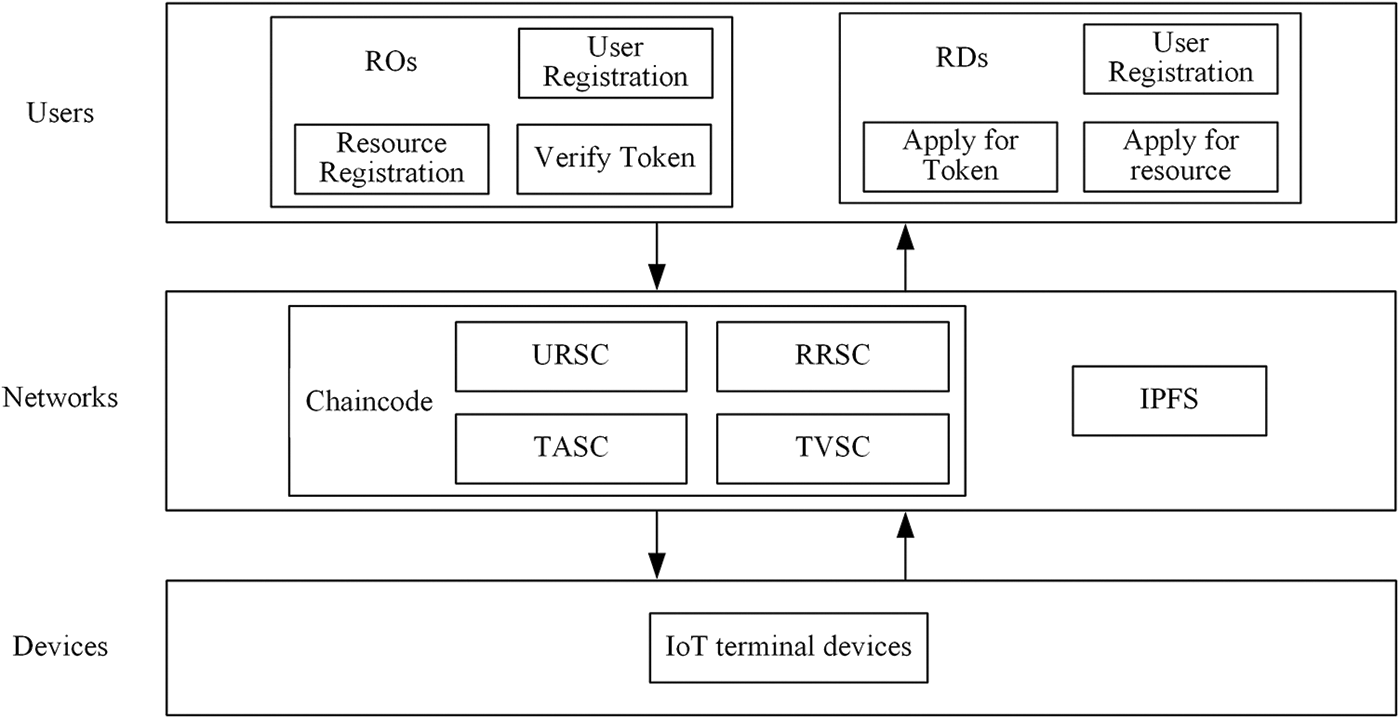
Figure 1: Access control system architecture diagram
The working sequence diagram of the access control system is shown in Fig. 2. The user first calls the smart contract for user registration, and after successful registration, the blockchain network will return the user’s attribute weights. Subsequently, ROs store their resources in IPFS based on symmetric encryption. IPFS returns a hash string of encrypted data to ROs, and then they call the contract to register the resources. When RDs want to request permissions for one or more resources, they first apply for a qualification token by calling TASC and then send the qualification token returned by TASC to ROs for verification. After verification, RDs will receive the hash string and encryption key k (key) sent by ROs. RDs use the hash string to retrieve the resources they need in IPFS, and decrypt k to obtain the original resources.

Figure 2: Access control system working sequence diagram
After the user joins the system, the registration module calls the URSC deployed in the BCN to upload their account address
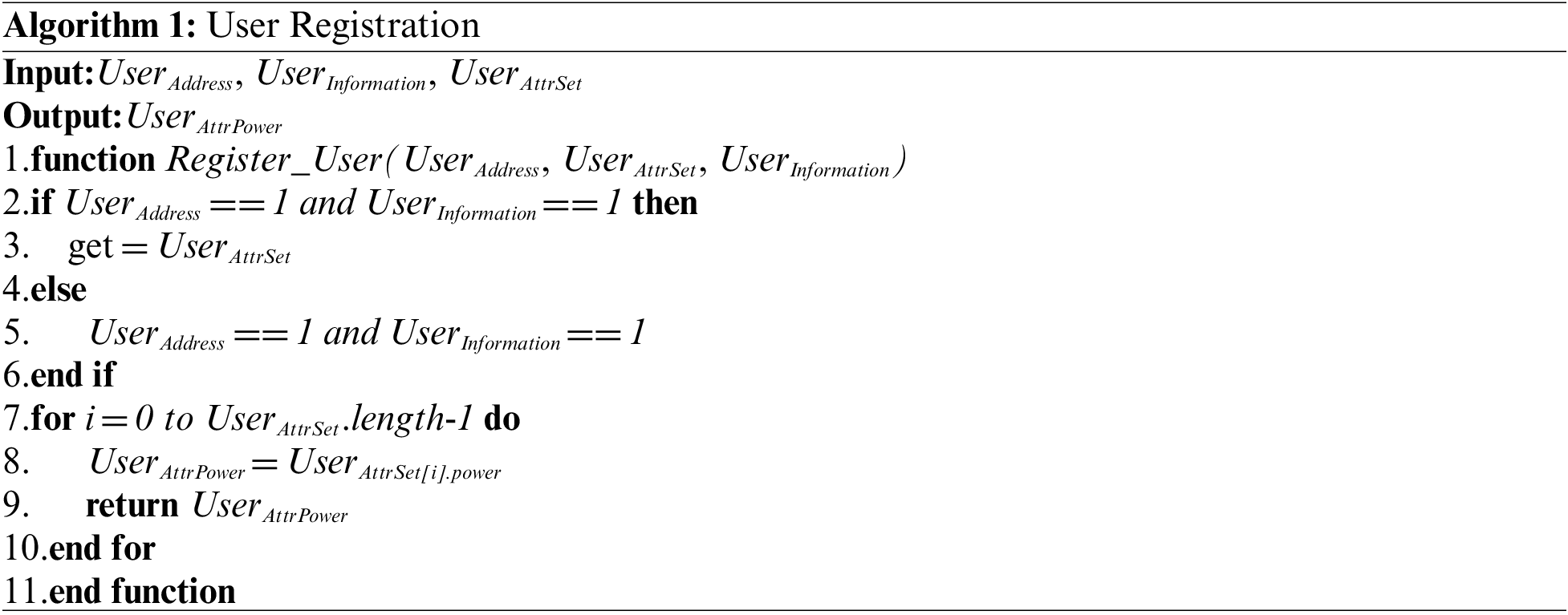
After the user successfully registers, they will register their resources, call the RRSC to upload the resource number

3.3 Credit Value Analysis Module
The design of RV is to constrain user bad behavior, identify malicious nodes, and implement trust constraints. BCN calculates reputation value attributes based on user history behavior records, and user and resource information it owns. The user’s RV is generally represented by any real number on [0, 1]. Assuming that there are only a small number of malicious users in the entire BCN. The calculation formula (1) for
The formula utilizes the results of the user’s previous sessions to compute the resource demander’s
To make the granularity of the division of access control privileges more detailed, the method adopted in this paper is to divide the RV into four different intervals, and only users whose RV meets the standard can apply for the privileges corresponding to that interval. In the actual interaction process of accessing resources, it is assumed that most of the user behaviors are relatively trustworthy, and malicious users and advanced users are only a small part of them. Therefore, according to the above assumptions, the four RV level intervals are set as [0, 0.1], (0.1, 0.5], (0.5, 0.9], and (0.9, 1) according to the normal distribution. The correspondence between RV and access rights is shown in Table 1.

3.4 Qualification Token Application Module
When RDs want to access a certain resource or resources, they can apply for the

3.5 Qualification Token Validation Module
After obtaining the qualification
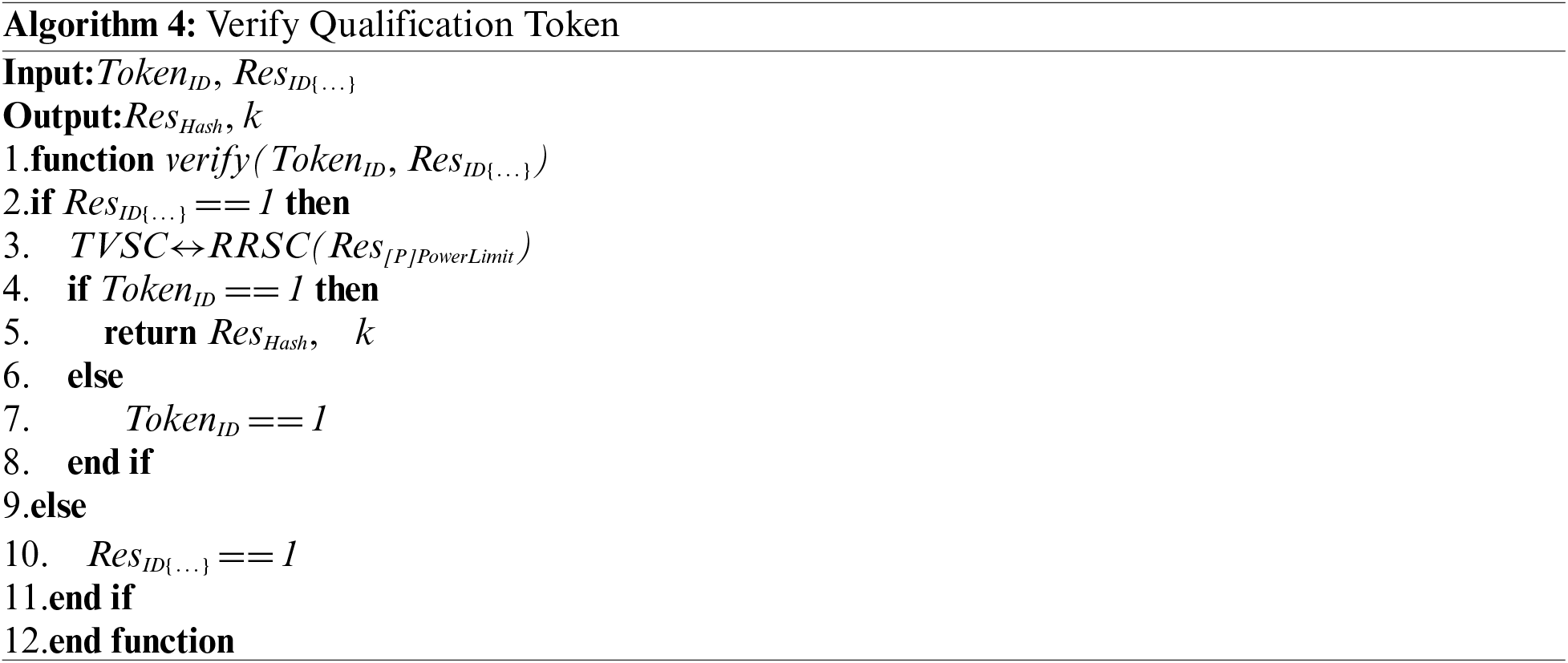
4 Safety Analysis and Experimental Results
In this section, we will comprehensively demonstrate the security of the proposed solution from three aspects: registration module, qualification token application module, and qualification token verification module. The results indicate that this scheme can meet the security requirements of IoT access control.
1) Security of registration module
Uplink operations on user identity or resource information can be considered as a registration event. During the registration phase, timestamp and
2) Security of qualification token application module
When RDs apply for qualification tokens, they will perform interactive verification with the access control policy set in the TASC contract. Only when RDs reach the set RV and
ROs will set
3) Security of qualification token verification module
RDs submit qualification tokens for permission verification. The
In summary, this solution can resist common risk attacks in IoT and ensure the security of the entire framework.
This section mainly tests the performance of the system by simulating the key steps in each module. References [26–28] all designed and implemented an IoT access control system based on the Hyperledger Fabric platform, which is combined with BCN. The purpose is to ensure the security and reliability of the access control mechanism in IoT and the access control permissions of each user. Similar to the design concept of this article, the access control policy is written into the SC, and the SC determines whether RDs are qualified to obtain certain permission for a certain resource, Therefore, references [26–28] were selected as the comparative literature.
To demonstrate the availability of the proposed scheme, we deployed the model of the scheme in the 17th version of VMware virtual machine, with a system configuration of dual-core 2 GB memory and 100 GB hard disk with Ubuntu 22.04.2 LTS 64bit, each module runs in the Docker container. Use the Hyperledger Caliper deployed in the Hyperledger Fabric as a performance testing tool. The software configuration of the testing environment is shown in Table 2, and the hardware configuration is shown in Table 3. The testing method is to initiate concurrent access requests to the Hyperledger Fabric, with 100, 200, 300, 400, and 500 requests, respectively, with write and read request types. The Workers in the experimental system are 5, the txNumber is 5000, and the txDuration is 30 s. Compare the performance of resource writing and reading between the two schemes under different concurrent access times.


1) Experimental results of resource write throughput and average time delay
The comparison of resource write throughput is shown in Fig. 3. From the obtained data comparison graph, it can be seen that the resource write throughput of this scheme is greater than the resource write throughput in reference [26] and reference [27]. In comparison with reference [28], the resource write throughput of this scheme is slightly lower in the early stage, due to the side chain structure used for concurrent access operations in reference [28] and not attached to the main chain. But after the number of concurrent accesses exceeds 300, the throughput of this scheme will exceed that of reference [28]. This is because as the number of concurrent accesses increases, the data on the main chain in reference [28] will expand, leading to network congestion during main-side chain interaction. When storing resources, this scheme first uploads them to IPFS. This process will partition the resources, and the partitioned resources will be encrypted separately and mapped by IPNS to generate IPNS names. Parsing the IPNS name can obtain fragments of the resource hash string, and connecting multiple fragments can obtain the complete hash string of the resource. Due to the introduction of a sharding mechanism for resource writing, the throughput of resource writing is higher than that in the comparative literature. When the number of concurrent accesses is 500, the resource write throughput of this scheme reaches its maximum of 85TPS.
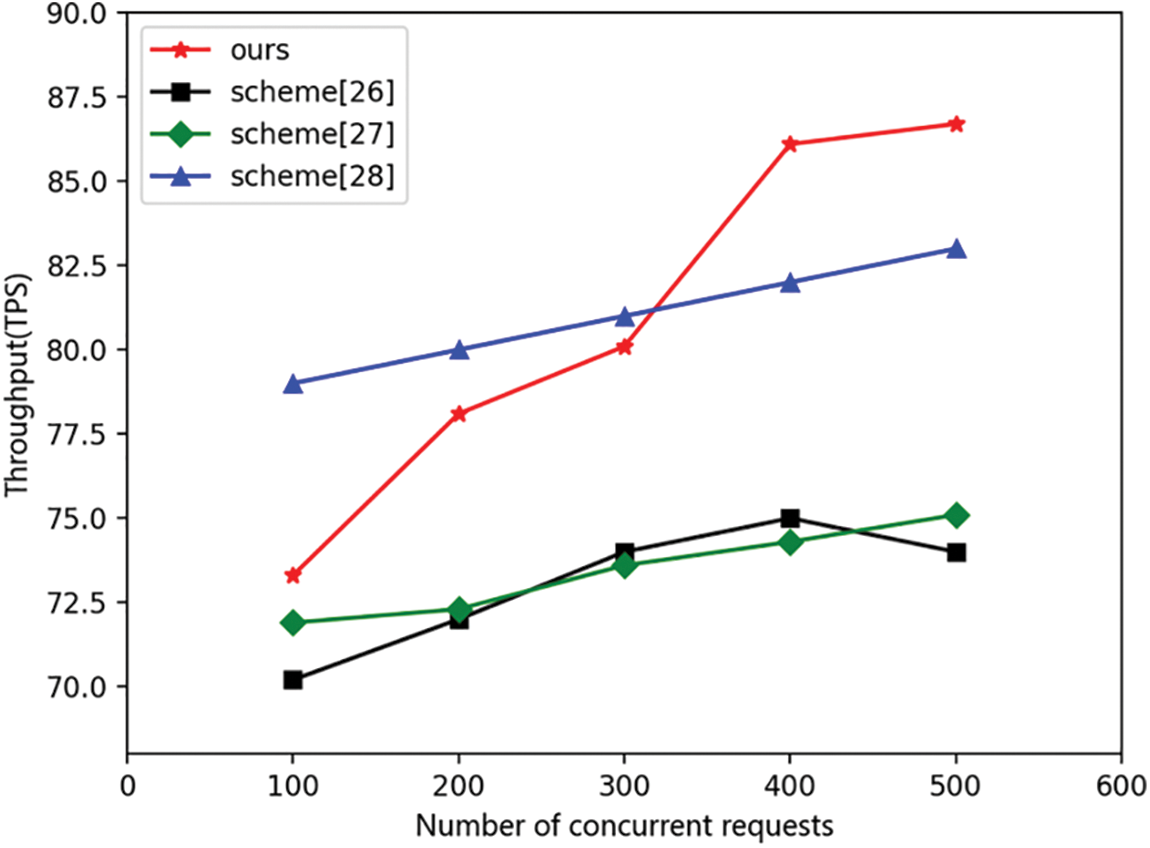
Figure 3: Resource write throughput comparison
The average time delay comparison of resource writes is shown in Fig. 4. In 500 concurrent access operations, the average time delay of resource writes in this scheme is around 0.25–0.3 s, and the average time delay of resource writes is lower than the average time delay of resource writes in the comparative literature. This is because the relevant attribute information in the access control strategy of this scheme is allocated by the chain code contract based on the user’s information, while the relevant attribute information in the access control strategy of the comparative literature is the IP address and MAC address of the resource that requires time to interact with the IoT device, resulting in fluctuations in the average time delay of resource writing.
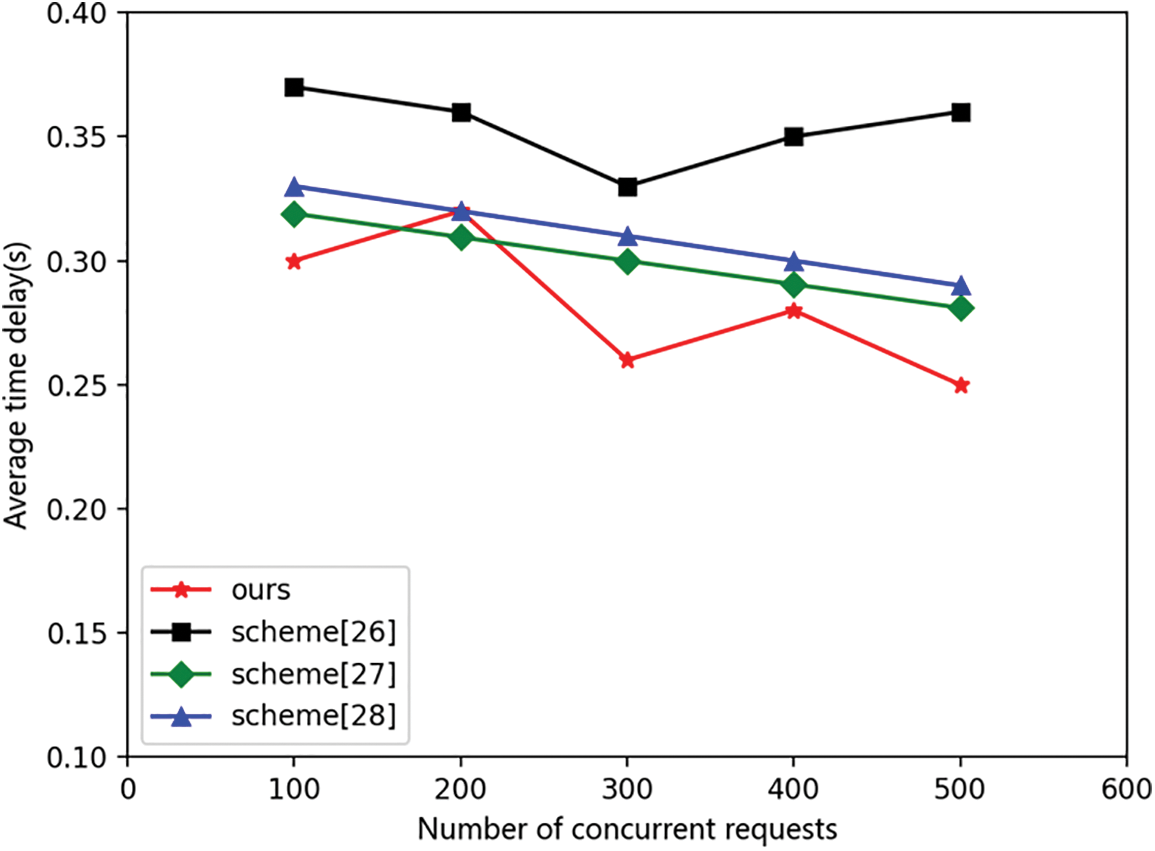
Figure 4: Resource write average time delay comparison
2) Experimental results of resource read throughput and average time delay
From Fig. 5, it can be seen that the resource read-throughput of this scheme is superior to that of the comparison scheme. In 500 concurrent access operations, the resource read throughput of this scheme remains above 250TPS, with a maximum of 292TPS. Compared to the reference, the maximum resource read throughput is only 240TPS. This is because qualification tokens have been introduced in this scheme, allowing RDs to initiate access requests to multiple resources simultaneously, greatly improving system performance. Fig. 5 shows that the throughput of both parties was initially similar, due to the initial process of applying for qualification tokens in RDs. However, as the number of visits increased, the throughput in this scheme showed a gradual upward trend, and the throughput in references [26] and [27] tended to stabilize, while the throughput in references [28] showed a decreasing trend.

Figure 5: Comparison of throughput of resource reads
In the comparison of average time delay, because this scheme applies for qualification tokens in advance, it will save resource access time. From the data in Fig. 6, it can be seen that in 500 concurrent access operations, the average time delay of this scheme is always below 0.05 s, with a minimum of 0.03 s. Compared to the literature, the minimum average time delay is about 0.06 s.

Figure 6: Comparison of the average time delay of resource reads
The above two sets of experiments demonstrate that this scheme has better performance compared to similar research schemes. The performance comparison table is shown in Table 4. It has good throughput and average time delay when writing and reading resources, and can withstand larger scale usage requests. This proves that introducing RV as an attribute in this scheme can refine access control policies and map resource access permissions to qualification tokens, It is a feasible solution to improve the throughput of the entire system and the security of access control policies by applying for access permissions to a certain or certain resources at once.

In this article, we introduce the concept of attributes in ABAC and consider RV as one of the attributes, proposing an RT-ABAC scheme combined with BCN. By refining attributes to reduce the difficulty of access control management, an open, transparent, secure, and trustworthy access control environment has been created. By utilizing IPFS storage resources, the performance of BCN has been improved, and access control policies have been deployed to BCN through SC, achieving distributed access control effects and effectively preventing a single-point-of-failure issue. Introducing qualification tokens into the strategy, RDs obtain access permissions by applying for qualification tokens in advance and can apply for multiple resource access permissions at once, reducing the impact of BCN on access control performance and improving the throughput of the entire BCN. However, the RT-ABAC scheme proposed in this article lacks effective methods for encrypting user-side information. A more lightweight attribute-based encryption method can be designed to further reduce the resource write time delay required in the access control process.
Acknowledgement: The authors would like to express their gratitude to the members of the research group for their support.
Funding Statement: The authors received no specific funding for this study.
Author Contributions: The authors confirm contribution to the paper as follows: study conception and design: Hongliang Tian; simulation, analysis, interpretation of results and draft manuscript preparation: Junyuan Tian. All authors reviewed the results and approved the final version of the manuscript.
Availability of Data and Materials: Data not available due to the nature of this research, participants of this study did not agree for their data to be shared publicly, so supporting data is not available.
Conflicts of Interest: The authors declare that they have no conflicts of interest to report regarding the present study.
References
1. D. G. Li, R. Du, Y. Fu and M. H. Au, “Meta-key: A secure data-sharing protocol under blockchain-based decentralized storage architecture,” IEEE Networking Letters, vol. 1, no. 1, pp. 30–33, 2019. [Google Scholar]
2. N. Feng, Y. Chen and H. Feng, “Toout source or not: The impact of information leak age risk on information security strategy,” Information & Management, vol. 57, no. 5, pp. 103215, 2020. [Google Scholar]
3. S. Figueroa-Lorenzo, J. Añorga and S. Arrizabalaga, “A role-based access control model in modbus SCADA systems. A centralized model approach,” Sensors, vol. 19, no. 20, pp. 4455, 2019. [Google Scholar] [PubMed]
4. P. Zhu, J. Hu, X. Li and Q. Zhu, “Using blockchain technology to enhance the traceability of original achievements,” IEEE Transactions on Engineering Management, vol. 70, no. 5, pp. 1693–1707, 2023. [Google Scholar]
5. D. Wu, Z. Xu and B. Chen, “Enforcing access control in information-centric edge networking,” IEEE Transactions on Communications, vol. 69, no. 1, pp. 353–364, 2021. [Google Scholar]
6. P. Zhu, J. Hu and X. Li, “Enhancing traceability of infectious diseases: A blockchain-based approach,” Information Processing & Management, vol. 58, no. 4, pp. 102570, 2021. [Google Scholar]
7. N. Nizamuddin, K. Salah and A. M. Azad, “Decentralized document version control using ethereum blockchain and IPFS,” Computers & Electrical Engineering, vol. 76, pp. 183–197, 2019. [Google Scholar]
8. Y. Hyoeun and P. Sejin, “Reliable vehicle data storage using blockchain and IPFS,” Electronics, vol. 10, no. 10, pp. 1130–1145, 2021. [Google Scholar]
9. L. Zhang, M. Peng and W. Wang, “Secure and efficient data storage and sharing scheme based on double blockchain,” Computers, Materials & Continua, vol. 66, no. 1, pp. 499–515, 2021. [Google Scholar]
10. J. Yang, S. He, Y. Xu, L. Chen and J. Ren, “Atrustedroutingschemeusing blockchain and reinforcement learning for wireless sensor networks,” Sensors, vol. 19, no. 4, pp. 970, 2019. [Google Scholar] [PubMed]
11. K. Košťál, P. Helebrangt and M. Belluš, “Management and monitoring of IoT devices using blockchain,” Sensors, vol. 19, no. 4, pp. 856, 2019. [Google Scholar]
12. J. Qiu, Z. Tian and C. Du, “A survey on access control in the age of internet of things,” IEEE Internet of Things Journal, vol. 7, no. 6, pp. 4682–4696, 2020. [Google Scholar]
13. P. Zhai, J. He and N. Zhu, “Blockchain-based Internet of Things access control technology in intelligent manufacturing,” Applied Sciences, vol. 12, no. 7, pp. 3692, 2022. [Google Scholar]
14. P. Zhu, J. Hu, X. Li, X. Jiang and M. X. Zhu, “The influences of livestreaming on online purchase intention: Examining platform characteristics and consumer psychology,” Industrial Management and Data Systems, vol. 123, no. 3, pp. 8620–8885, 2022. [Google Scholar]
15. A. R. Rajput, Q. Li and M. T. Ahvanooey, “EACMS: Emergency access control management system for personal health record based on blockchain,” IEEE Access, vol. 7, pp. 84304–84317, 2019. [Google Scholar]
16. Y. Zhang, S. Kasahara and Y. Shen, “Smart contract-based access control for the Internet of Things,” IEEE Internet of Things Journal, vol. 6, no. 2, pp. 1594–1605, 2018. [Google Scholar]
17. S. Alshehri and O. Bamasag, “AAC-IoT attribute access control scheme for IoT using lightweight cryptography and hyperledger fabric blockchain,” Applied Sciences, vol. 12, pp. 8111, 2022. [Google Scholar]
18. M. Cui, D. Han and J. Wang, “An ef cient and safe road condition monitoring authentication scheme based on fog computing,” IEEE Internet Things, vol. 6, no. 5, pp. 90769084, 2019. [Google Scholar]
19. M. Sultana, A. Hossain and F. Laila, “Towards developing a secure medical image sharing system based on zero trust principles and blockchain technology,” BMC Medical Informatics and Decision Making, vol. 20, no. 1, pp. 256, 2020. [Google Scholar] [PubMed]
20. U. J. Muhammad, “Blockchain-based secure data storage for distributed vehicular networks,” Applied Sciences, vol. 10, no. 6, pp. 2011, 2020. [Google Scholar]
21. P. Nath, J. R. Mushahary and U. Roy, “AI and Blockchain-based source code vulnerability detection andprevention system for multiparty software development,” Computers and Electrical Engineering, vol. 106, pp. 108607, 2023. [Google Scholar]
22. A. D. Liu, X. H. Du and N. Wang, “A blockchain-based access control mechanism for big data,” Journal of Software, vol. 30, no. 9, pp. 2636–2654, 2019. [Google Scholar]
23. S. Ding, J. Cao and C. Li, “A novel attribute-based access control scheme using blockchain for IoT,” IEEE Access, vol. 7, pp. 38431–38441, 2019. [Google Scholar]
24. M. Gupta, F. M. Awaysheh and J. Benson, “An attribute-based access control for cloud-enabled industrial smart vehicles,” IEEE Transactions on Industrial Informatics, vol. 17, no. 6, pp. 4288–4297, 2020. [Google Scholar]
25. S. Behrad, E. Bertin and S. Tuffin, “A new scalable authentication and access control mechanism for 5G-based IoT,” Future Generation Computer Systems, vol. 108, pp. 46–61, 2020. [Google Scholar]
26. H. Liu, D. Han and D. Li, “Fabric-IoT: A blockchain-based access control system in IoT,” IEEE Access, vol. 8, pp. 18207–18218, 2020. [Google Scholar]
27. J. H. Zhang, “Design and implementation of Internet of Things access control system based on blockchain,” Ph.D. dissertation, Inner Mongolia University, China, 2021. [Google Scholar]
28. J. L. Liu, “Research on distributed access control mechanism of Internet of Things based on blockchain,” Ph.D. dissertation, Tianjin University of Techology, China, 2022. [Google Scholar]
Cite This Article
 Copyright © 2024 The Author(s). Published by Tech Science Press.
Copyright © 2024 The Author(s). Published by Tech Science Press.This work is licensed under a Creative Commons Attribution 4.0 International License , which permits unrestricted use, distribution, and reproduction in any medium, provided the original work is properly cited.


 Submit a Paper
Submit a Paper Propose a Special lssue
Propose a Special lssue View Full Text
View Full Text Download PDF
Download PDF Downloads
Downloads
 Citation Tools
Citation Tools